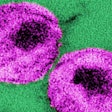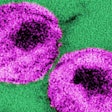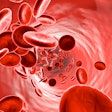
COVID-19 has accelerated the need for the evaluation and development of self-tests and specimen self-collection for the diagnosis of sexually transmitted infections (STIs), but significant obstacles remain, according to an October 19 review in the Journal of Clinical Microbiology.
It has been widely reported that the COVID-19 pandemic has caused declines in rates for different screening exams, and the same holds for STI screenings, according to the authors, led by Ellen Kersh, PhD, of the U.S. Centers for Disease Control and Prevention (CDC).
STI tests by the numbers
In the review, the authors focused on the screening of asymptomatic individuals for three STIs: syphilis, gonorrhea, and chlamydia.
For bacterial STIs, asymptomatic screening is recommended for chlamydia, gonorrhea, and syphilis by the CDC and the U.S. Preventive Services Task Force; the agencies have screening guidelines that vary by risk population.
To demonstrate the sheer volume of STI cases, and thus the need for testing alternatives, the authors provided the latest available numbers of cases from 2018 according to the CDC.
| Cases of sexually transmitted infections (STIs)** | |
| Chlamydia | 1,758,668 |
| Gonorrhea | 583,405 |
| Syphilis* | 115,045 |
| Congenital syphilis | 1,306 |
The authors estimated that between 14 million and 19 million tests for each illness were conducted in 2016, but they said it is likely an underestimation.
"This is likely a substantial underestimation of the current testing volume because test positivity may be considerably lower in commercial laboratories that often work with private providers rather than public sexually transmitted disease (STD) clinics," they wrote.
The volume for syphilis testing is even harder to estimate due to its reporting processes, they added.
COVID-19 pandemic effect on STI testing
The idea of home-based STI testing became more urgent once clinics were affected by the COVID-19 pandemic, the authors noted.
In a 2020 survey, the National Coalition of STD Directors, a nonprofit, nonpartisan public health membership organization, measured the effect of COVID-19 on the STD field. The survey found that as a direct result of the COVID-19 pandemic in the U.S.:
- 83% of STD programs are deferring STD services or field visits
- 66% of clinics report a decrease in sexual health screening and testing
- 60% of clinics are experiencing reduced capacity to treat STDs
In addition, some sexual health clinics closed for some period during the pandemic, prompting providers to explore contactless ways to deliver STI testing.
Telemedicine for at-home STI testing
Two types of at-home STI testing models are available to patients. In the first model, the patient decides what test they want, purchases it without a prescription, receives the results at home, and then decides whether to follow up with a provider.
Currently, this model only exists for HIV testing, as there are no over-the-counter tests for syphilis, gonorrhea, or chlamydia available to patients.
In the second model, spurred by the COVID-19 pandemic, a telemedicine provider sends a self-collection kit to the patient's home and then the specimen is shipped to a laboratory for processing. In these instances, the telemedicine company communicates the results and provides information on care, among other administrative tasks.
To meet the demand for STI testing via telemedicine during the pandemic, laboratories had to adjust what they would consider acceptable for at-home STI tests, which are performed without medical oversight and are less able to maintain specimen integrity due to factors related to handling and transit to laboratories.
To address these problems, some remote providers made instructional materials to help patients with correct specimen collection and mailed kits to patients containing materials such as foldable urine cups or cardboard tube stands to make collection more convenient.
Can existing tests be modified?
The paper notes that rapid and point-of care tests sometimes have the potential for adaptation to self-testing, and several tests are in development for settings like express clinics and pharmacies. However, none of the current widely used tests in the U.S. are likely to be ready for home use in the near future, according to the authors.
In the case of gonorrhea and chlamydia, most express clinics use the Cepheid GC/CT GeneXpert test, which was the first rapid nucleic acid amplification test to receive U.S. Food and Drug Administration clearance in 2012. Cepheid has adapted its technology to the CLIA-waived "GeneXpert Xpress" product for influenza virus and group A streptococcus, which may become available for STIs in the future. However, it is unlikely to be adapted to home usage because of its large size, according to Kersh et al.
In the case of syphilis, the Syphilis Health Check test is a rapid antibody test used in outreach settings. It is CLIA-waived for fingerstick whole-blood specimens but requires precise operation by a trained laboratorian to obtain accurate results and is therefore unlikely to be approved for self-testing, the authors noted.
Remaining obstacles
The remaining obstacles to the development of self-tests for STIs identified by the authors include the high price of the tests, regulatory approval, support for laboratories offering the service, and uncertainty regarding whether target populations with the greatest need are reached effectively.
At-home syphilis testing remains particularly challenging and will require additional research, ideally resulting in an oral or urine syphilis test, since blood self-collection poses a considerable barrier to adoption.
However, the authors emphasized that "increasing access to STI testing is a key strategy to mitigate continuously rising STI rates, particularly congenital syphilis."
"Perhaps the greatest benefit [of self-testing] is that it allows convenience and privacy and gives the patient an opportunity to avoid embarrassment while still accessing STI care," the authors wrote.















